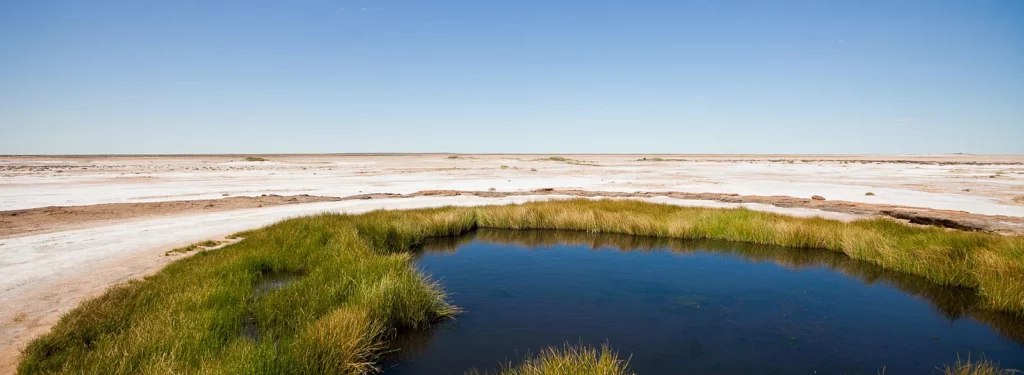The Great Artesian Basin (GAB) is Australia’s largest underground freshwater resources in the world, it lies beneath parts of the Northern Territory, Queensland, South Australia, and New South Wales spanning 1.7 million square kilometres. To see the area covered by the GAB please see the map.
There is roughly 65 million GL of groundwater within the Basin which can emerge on the surface through creeks, rivers and flows into springs1. This includes mound springs; natural springs created from water deep filtering to the surface, forming mounds and bubbling ponds that may be a permanent water source. Mound springs are protected under the Environment Protection and Biodiversity Conservation Act 1999 (EPBC Act).
Aboriginal and Torres Strait Islander people have relied on Basin water to live in dry inland areas of Australia for more than 60,000 years1. There have been significant impacts on the GAB mound springs due to extractions of water from the GAB through the Food, Wine and Agribusiness and Energy and Mining sectors, as well as degradation by cattle and feral herbivores. Water availability underpins the cultural, economic, environmental, and social values of water dependent ecosystems.
Infrastructure South Australia (ISA) has funded the Goyder Institute for Water Research to investigate the impact on spring pressure levels and spring flow rates from spring tails if there was a reduction in groundwater extracted from the GAB aquifers.
This project will rely on the GAB hydrogeological model developed by the SA Department for Environment and Water (DEW) and informing this model through predictive scenario analysis. The project aims to improve the model regarding the relationship between volume of water held within the GAB, the response of aquifer pressure and the impact on mound springs within Northern South Australia.
This project is conducted by researchers at Flinders University in partnership with SA DEW. For more information on the project please contact Dr Bryony Cotterell, the Goyder Institute for Water Research.
References



